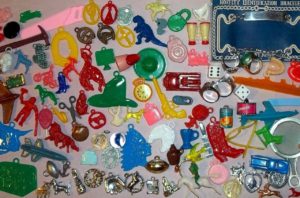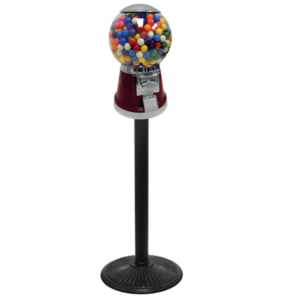
Some things never change. A tried and true idea that works will be recycled from generation to generation.
Thus is the case with the machine that dispenses small items for a price. Ancient Greek engineer and mathematician Hero of Alexandria devised a machine around 215 BC that would dispense holy water in temples for a coin. The concept was such a hit that it appeared again and again throughout human history.
And one such vending machine in particular has proven its historical mettle, so that it exists in essentially the same form today as it did in the 50’s and 60’s, when we saw it as children: the gumball/novelty machine.
Thus, when we take our grandchildren to the grocery store with us, we are likely to be asked for a quarter or two at the entrance, because the store manager has seen fit to plant a toy dispensing machine or two right where the little tykes can spot it as we walk in.
The strategy works. It always has, always will. Thus, each generation grows up with happy memories of feeding coins into a slot and twisting a handle to receive a prize.
We Boomers had a wide variety of machines at our disposal, which accepted amounts from a penny to a quarter.
The machines didn’t just use the idea of getting a prize for a nickel or so to attract our business. No, they would employ slightly nefarious means to get us to part with our precious coinage.
For instance, there was the classic bait-and-switch. A quarter machine was the high end device of the 60’s, so that’s where you would see the most outrageous examples of luring in the customer with one item, then having them depart with another entirely.

Take the capsule vending machine at the Miami, Oklahoma Bowling Alley, for instance. Inside its glass front was a piece of cardboard festooned with examples of, presumably, the toys that were contained within the translucent capsules, each available for a quarter. In the upper left corner was attached a real derringer! At least it looked real. It was a tiny firearm, small enough to fit nicely in a six-year-old’s hand. There was nothing about it that implied it was a toy, so naturally the word spread around town that you could obtain a genuine pistol for a quarter!
Of course, it wasn’t a real gun. In fact, it was highly unlikely that the toy, which would have retailed for a dollar or more, was ever found in the machine. Instead, taking a chance with a hard-begged quarter, I breathlessly open a plastic capsule to find a rubber monster’s face, animated by my thumb and index finger which fit into two little tubes in the back.
I remember that incident very clearly. I’m not sure why I recall that one occasion, out of hundreds of experiences with capsule machines, but I do.
Another form of temptation for kids was in putting penny gumballs into a machine that accepted nickels. A kid would willingly buy a penny piece of gum for five times the amount IF there were a few capsules inside with dime-sized items contained therein.
Presumably, truth-in-advertising laws have forced purveyors of machine-dispensed novelties to be more honest about what prizes a child might obtain with his coins. But even if they haven’t, kids can get the opportunity to learn the same lessons that we did at their age:
If it looks too good to be true, it probably is.